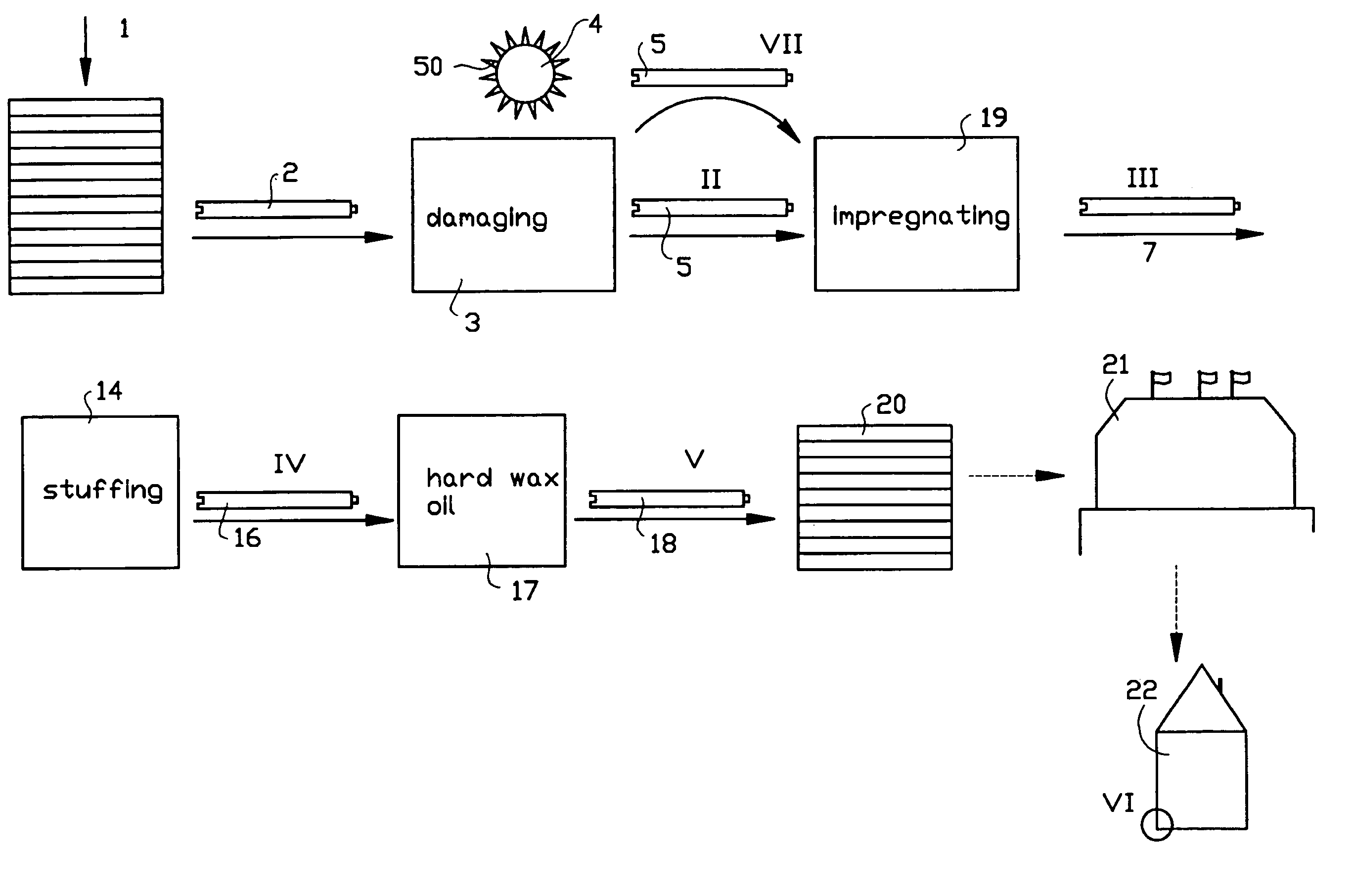Method for manufacturing floor boards
a manufacturing method and technology for wooden floors, applied in the field of manufacturing wooden floors, can solve the problems of damage to the top surface of the upper board, metal parts and stones getting in between the boards, and the inability to manufacture genuine antique furnishings most of the time, and achieve the effect of dark appearan
- Summary
- Abstract
- Description
- Claims
- Application Information
AI Technical Summary
Benefits of technology
Problems solved by technology
Method used
Image
Examples
Embodiment Construction
[0061]In FIG. 1, 1 indicates a stack of new (dry) boards planed, and supplied from a timber mill to the treatment factory (3, 14, 17, 19, 24).
[0062]The boards may have been sawed through in longitudinal direction parallel to the main surface—in that case mostly having straight side edges—in order to form two boards of for instance 9 mm thick. The saw cut can be made with a belt saw, with which saw lines are formed transverse to the main direction of the boards in the saw surfaces, which saw surfaces form the top surface in the further treatment. In this way a particular pattern is obtained.
[0063]In the treatment factory the boards 2, which may or may not be provided with knots and the like, are placed in a process unit 3, where, while being linearly turned, that means revolution about a centre line parallel to the length of the boards, they are mechanically aged, that means being provided with surface damages. This may among others take place by means of metal balls 4 provided with ...
PUM
| Property | Measurement | Unit |
|---|---|---|
| thick | aaaaa | aaaaa |
| thickness | aaaaa | aaaaa |
| thickness | aaaaa | aaaaa |
Abstract
Description
Claims
Application Information
 Login to View More
Login to View More - R&D
- Intellectual Property
- Life Sciences
- Materials
- Tech Scout
- Unparalleled Data Quality
- Higher Quality Content
- 60% Fewer Hallucinations
Browse by: Latest US Patents, China's latest patents, Technical Efficacy Thesaurus, Application Domain, Technology Topic, Popular Technical Reports.
© 2025 PatSnap. All rights reserved.Legal|Privacy policy|Modern Slavery Act Transparency Statement|Sitemap|About US| Contact US: help@patsnap.com



